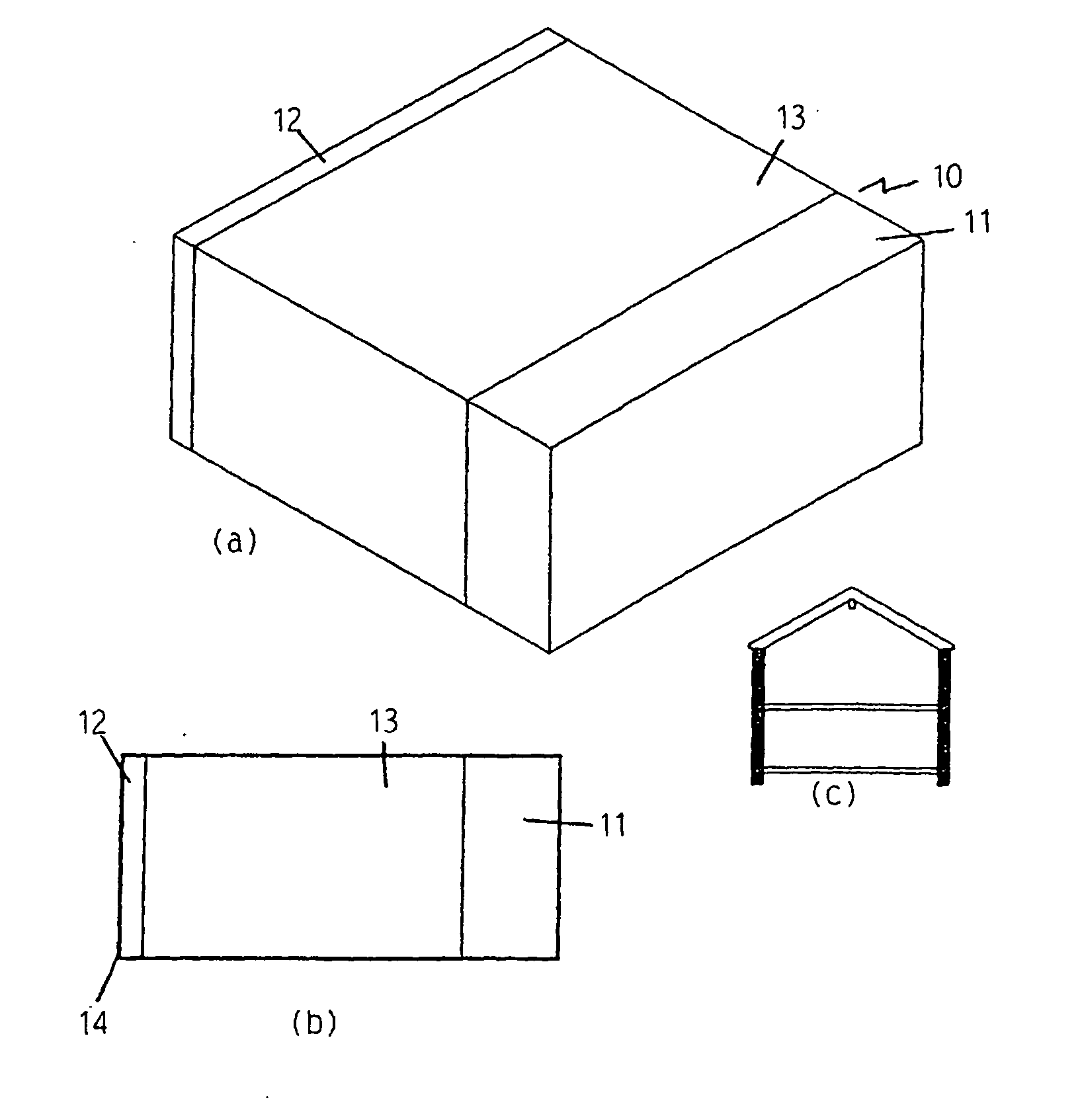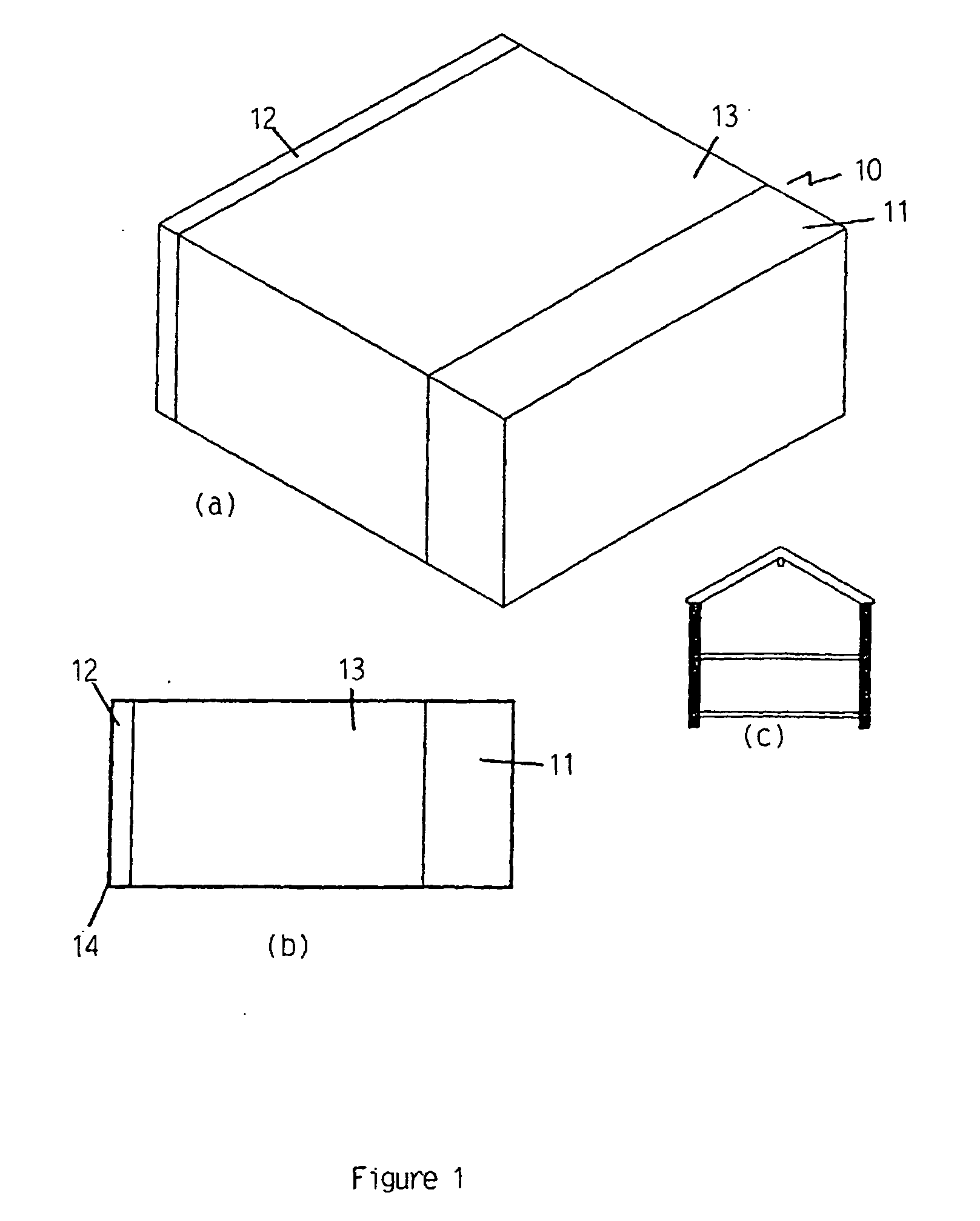Geopolymeric structural building units and methods of manufacture thereof
a technology of structural building units and geopolymer, applied in the direction of cement production, solid waste management, sustainable waste treatment, etc., can solve the problems of low compressive strength material with little geopolymer properties, and achieve the effect of enhancing thermal performance, optimisation of thermal and structural performance, and optimizing thermal performance of building units
- Summary
- Abstract
- Description
- Claims
- Application Information
AI Technical Summary
Benefits of technology
Problems solved by technology
Method used
Image
Examples
example 1
[0176]A mixture for the geopolymer cement of the present invention is detailed in the Example below.
[0177]First the aluminosilicate powder is prepared in mixture A.
[0178]Mixture A:
Calcined Interbasaltic material204 gfrom Northern IrelandGround Granulated Blastfurnace 29 gSlag (GGBS)
[0179]This 233 g of powder is then added to the liquid component, Mixture B.
[0180]Mixture B:
Potassium Silicate140 g(SiO2—26.6%; K2O—30.7%; H2O—41.2%)Added Water 29 g
[0181]The calcined weathered Interbasaltic material from Northern Ireland is preferably a dehydroxylated lithomarge such as is found in Co. Antrim, Northern Ireland, is calcined at 750° C. for 6 hours and then milled to a fine powder with a median particle size of 95 microns. The calcined weathered Interbasaltic material from Northern Ireland is preferably a dehydroxylated lithomarge such as is found in Co. Antrim, Northern Ireland and has a chemical composition containing approx 35% SiO2; 25% Al2O3; 21% Fe2O3 and 2.5% TiO2 (average amounts). ...
example 2
[0184]The geopolymer cement of Example 1 may also be used to form a general purpose geopolymer concrete. In this Example, a geopolymer concrete is produced using the geopolymer cement of Example 1 mixed with aggregate. The resulting geopolymer concrete will achieve a compressive strength of 25 N / mm2 after curing for 28 days at room temperature.
Standard Mixture of Example 11759 gConcrete Sand2212 g10 mm Crushed Rock3475 gAggregateAdded Water 250 g
example 3
Formation of Structural Building Unit for Constructing Walls
[0185]The geopolymer cement of Example 1 is mixed with other aggregates to produce the wall building unit of the present invention, formed of geopolymer concrete. The structural unit consists of three sections as shown in FIG. 1(a). The following procedure may be followed to which the manufacturing process of the invention is not limited.
[0186]A nylon or polycarbonate mould, complete with base and top plates, is used to produce a casting of the following dimensions: width—450 mm; depth—225 mm; height—450 mm. The mould is secured on a vibrating table and filled in sections.
Section 1—Face
[0187]To 1035 g of the geopolymer cement of Example 1 is added the following mixture:
Crushed Basalt1734 g(100% passing 6 mm)Water 197 g
[0188]The water is adjusted to compensate for the moisture content of the crushed basalt—the figures shown are for a moisture content of 0.5%. The mixture is placed in a suitable forced action mixer and blende...
PUM
| Property | Measurement | Unit |
|---|---|---|
| particle size | aaaaa | aaaaa |
| particle size | aaaaa | aaaaa |
| compressive strength | aaaaa | aaaaa |
Abstract
Description
Claims
Application Information
 Login to View More
Login to View More - R&D
- Intellectual Property
- Life Sciences
- Materials
- Tech Scout
- Unparalleled Data Quality
- Higher Quality Content
- 60% Fewer Hallucinations
Browse by: Latest US Patents, China's latest patents, Technical Efficacy Thesaurus, Application Domain, Technology Topic, Popular Technical Reports.
© 2025 PatSnap. All rights reserved.Legal|Privacy policy|Modern Slavery Act Transparency Statement|Sitemap|About US| Contact US: help@patsnap.com



